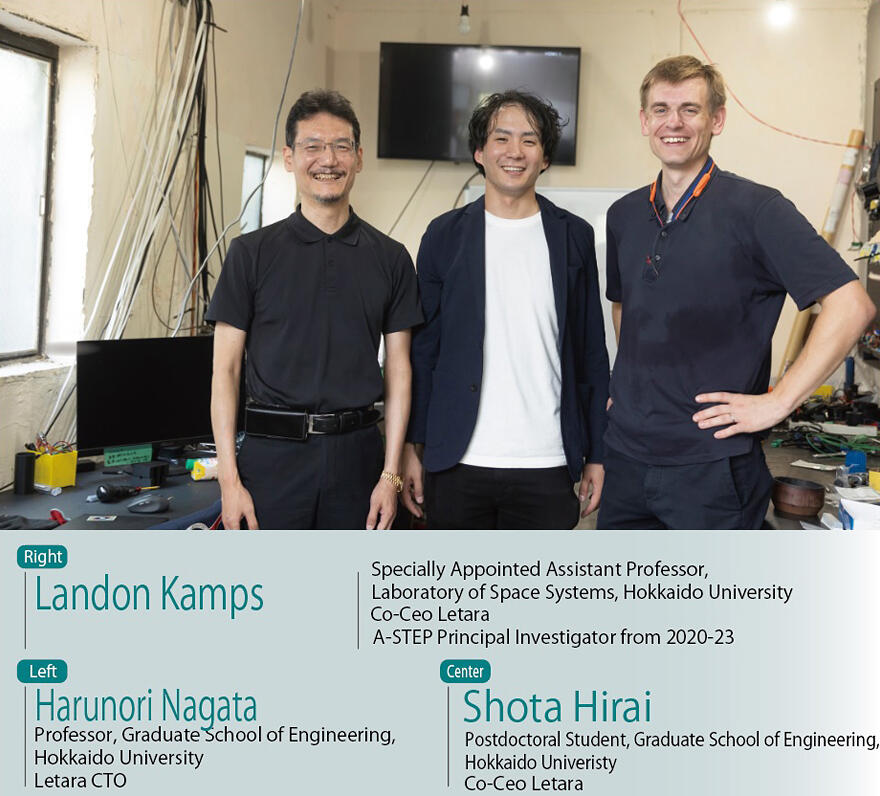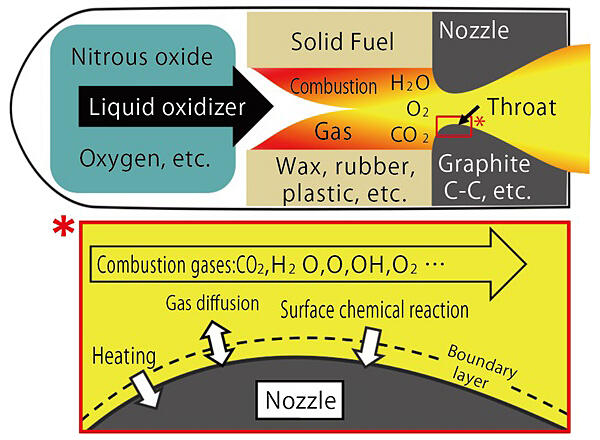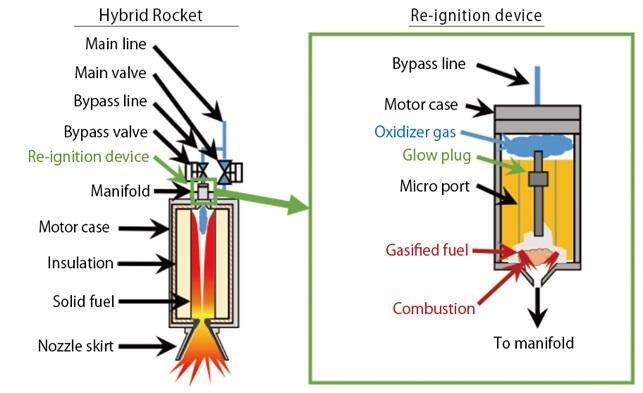In the segment 'A Look Around Innovation,' we introduce R&D sites that have led to social implementation. In this installment, we introduce a Hokkaido University startup company established by Specially Appointed Assistant Professor Landon Kamps and his colleagues of the Laboratory of Space Systems at Hokkaido University. This company is developing a hybrid rocket propulsion system to achieve the realization of 'last-mile in-space transportation,' guiding small artificial satellites with shared rides in space to their designated orbits.

Internet available in the wilderness thanks to infrastructure in space: A startup company established in Hokkaido
A society where people and objects can freely travel in space. Specially Appointed Assistant Professor Landon Kamps of the Laboratory of Space Systems at Hokkaido University is exploring such a dream-like society. Kamps served in the U.S. Army and was deployed in Afghanistan. "Even in the wilderness, where there is nothing around, we could use the internet thanks to satellites in space. Experiencing the wonders of the satellites, I was inspired to pursue a research career to enable everyone to harness this infrastructure in space," he said.
He then came to Japan to study under Professor Harunori Nagata of the Graduate School of Engineering at Hokkaido University, who has been working on the development of hybrid rockets. A hybrid rocket uses plastic-based solid fuel and liquefied oxidizer gas as propellants, combining the advantages of each type of fuel. It has the excellent features of a simple structure, easy control, no risk of explosion, and inexpensive fuel (Fig. 1).
Fig. 1: Structure of hybrid rocket

Nagata has been involved in the development of various hybrid rockets through industry-academia collaboration. He stated, "The selection of Mamoru Mohri as an astronaut in 1985 sparked enthusiasm for boosting space development in his home prefecture of Hokkaido. Since the establishment of the Laboratory of Space Systems at Hokkaido University in 1996, research and development (R&D) collaborations with local businesses have been conducted."
Postdoctoral student Shota Hirai was a first-year master's student and member of the Laboratory when Kamps met Nagata in 2015. Hirai recalled, "I still remember seeing Kamps studying hard in the lab. In our daily interactions, I developed a connection with him, and even after I joined a private company following the completion of my master's degree, we maintained frequent contact." After several fruitful years, Kamps and his colleagues began to explore the commercialization of space transportation using hybrid rockets. Their market research revealed a need for 'last-mile transportation,' which involves sending small satellites and other items to their destinations.
Currently, there is a long waiting list for satellite launches. "Therefore, the trend of 'ridesharing,' where multiple small satellites are launched together on a single rocket, is increasing. Each satellite requires a means of transportation to reach its intended final orbit. We decided to solve this problem with the hybrid rocket we are developing." From this background, they established Letara (Sapporo City, Hokkaido) in 2020, with Nagata serving as CTO, and Kamps and Hirai as co-CEOs. This startup company aims to commercialize hybrid propulsion systems for small satellites.
Kamps proposed a low-voltage, low-power system for post-launch orbit transfer
Around the time of Letara's establishment, Kamps compiled a proposal for 'the development of a hybrid rocket re-ignition device for space propulsion systems' and submitted it to JST's A-STEP industry-academia collaboration program. "A-STEP, which supports R&D and the commercialization process, was a great opportunity for our university startup company. The startup support through industry-academia collaboration also began at Hokkaido University, providing us with the best environment for our development." After being selected for A-STEP, Kamps began developing a 'hybrid kick motor,' which uses a hybrid rocket as a propulsion system (kick motor) for orbit transfer to be loaded onto a small satellite.
In last-mile transportation, re-ignition of the kick motor is essential for transfer to orbit without intersections and for insertion into orbit around other celestial bodies. It was here that Kamps proposed a simple, low-voltage, low-power re-ignition device with a preheating plug inserted into the solid fuel of a hybrid rocket (Fig. 2). Nagata, Hirai, and other students at the Laboratory were deeply involved in the development of this device (Fig. 3). "We are collaborating on everything from customizing the solid fuel using a 3D printer to assembling the device. Ignition experiments are very dangerous, so safety and 'tidiness' are the priorities in the laboratory," said Kamps with a smile.
They are also investigating chemical reactions between the nozzle throat wall of the hybrid rocket and oxidants contained in the combustion gas, as well as clarifying 'nozzle erosion.' Nozzle erosion is a phenomenon in which the nozzle throat area is degraded or scraped by the high-speed impact of solid fuel debris. They were able to unravel this phenomenon through their simulations and demonstration tests and reflect the results in the improved design.
Fig. 2: Overview of hybrid kick motor re-ignition device

Fig. 3: Development and experimentation in the experimental building

In an experiment to measure the propulsive force of a hybrid rocket, a propulsive output of 40,000 N, which exceeds the 100 N required for a small satellite to travel in a short period of time, was demonstrated (right).
The search for safe and inexpensive rockets with high-thrust: Starting from "pure white"
Now that A-STEP is completed, Kamps plans to demonstrate orbit transfer using a hybrid kick motor and hopes to accelerate the commercialization of this technology at Letara. Currently, he is collaborating with a local company to establish a practical end-face combustion-type technology that can solve the three problems of hybrid rockets: combustion efficiency, fuel recession velocity, and thrust. "I would like to continue working with Mr. Hirai, Mr. Nagata, and many others to develop high-thrust, safe and inexpensive hybrid rockets that will make space more accessible in the future," he said.
Letara means 'pure white' in the language of the indigenous Ainu people. Based in Sapporo City, Hokkaido, the company's name was chosen to represent the image of a winter snowy landscape, its novelty as a startup, and its potential to become any color in the future. This year, Letara was selected for the Ministry of Economy, Trade and Industry's Go-Tech Project (a project to support R&D by growing small and medium-sized enterprises) and succeeded in raising 100 million yen in funding. What kind of future does Letara envision as a startup company, leveraging diverse expertise to advance R&D? With so many possibilities, Kamps and his colleagues have just begun their challenge.
(Article: Manami Yokoi, Photography: Hideki Ishihara)




